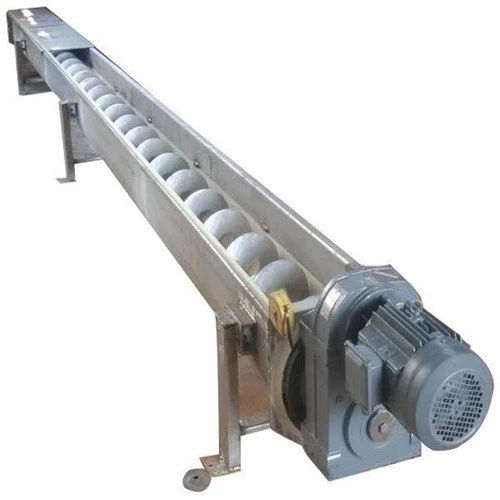Call us
07971584022

A mechanical system used to move bulk products or materials from one location to another for additional processing or distribution is referred to as a feeding conveyor. It is also referred to as a feeder conveyor or an infeed conveyor. Its main job is to give a steady, controlled flow of materials to processes or equipment that are further along.
1. Conveyor belt or chain: Feeding conveyors can move materials using either a conveyor belt or chain. The type of material being transported, its weight, and the needs of the particular application are among the elements that influence the belt or chain decision.
2. Adjustable Speed: Feeding conveyors frequently have variable speed controls that let users change the conveyor's speed to match the required feeding rate and improve subsequent operations.
3. At its loading end, a feeding conveyor may have a hopper or chute to help with the controlled transfer of material onto the chain or belt.
4. Feeding conveyors can be made to work on an incline or decline, allowing material to be transferred between different heights, depending on the construction and specifications of the application.
1. Effective Material Handling: Feeding conveyors make sure that material flows consistently and under control into equipment downstream, reducing bottlenecks and improving production procedures.
2. Productivity Gains: By automating the feeding process, these conveyors offer higher throughput while requiring less manual labour, which raises total productivity.
3. Flexibility and Customization: Feeding conveyors can be made to fit the requirements of a particular application, with adjustable height, speed, and several options for loading and discharging. The smooth integration into current production lines is made possible by this flexibility.
4. Space Optimisation: Feeding conveyors are designed to efficiently transmit material from one location to another, maximising the use of available floor space. This makes them perfect for spaces with limited floor space.
5. Reduced Material Loss and Waste: These conveyors minimise material spillage and waste by regulated feeding, which reduces costs and boosts operational effectiveness.
6. Feeding conveyors frequently have safety features like guards and emergency stops to ensure operator safety while they are in use. Additionally, they streamline material loading, minimising physical labour and dangers.
A variety of industries, including manufacturing, packing, agriculture, and mining, depend on feeding conveyors to transport materials in an effective and controlled manner. Their advantages and characteristics aid in streamlining procedures, boosting output, cutting waste, and enhancing workplace security.